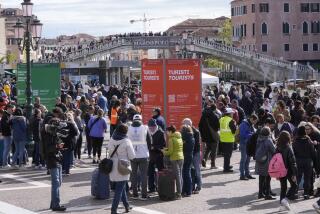Coronavirus turns Rome, the Eternal City, into a ghost town; Italy death toll climbs to 148
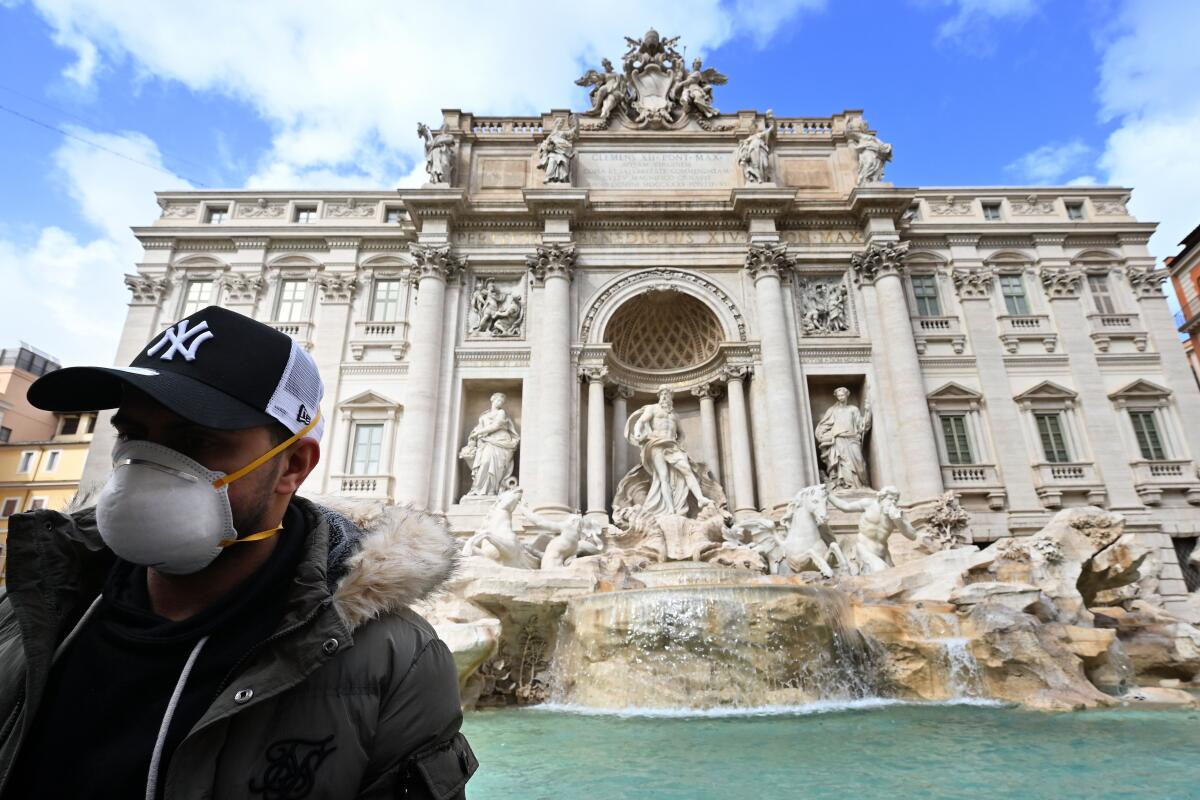
- Share via
ROME — A few years ago, police officers at the Trevi Fountain in Rome were given whistles to blow on when unruly mobs of tourists dangled their feet in the water or even attempted a quick dip.
But on Thursday, Rome’s battle against the growing invasion of low-cost airlines and Airbnb users felt like ancient history, as a policewoman gazed wistfully at the measly crowd milling around the Baroque landmark, her whistle hanging unused around her neck.
“My job just got a lot easier, but as a Roman I am pretty sad,” said the officer, who would not give her name.

Welcome to the Eternal City in the era of the coronavirus, as tourists vanish from the streets and locals watch nervously as the virus creeps south toward the Italian capital from the clusters where it first appeared in northern Italy two weeks ago.
Since then, with experts scrambling to figure out how it got there from Wuhan, China, the virus has exploded in Italy faster than anywhere else outside Asia — with the death toll reaching 148 on Thursday and total cases leaping to 3,858.
At first, 11 towns were quarantined in the northern regions of Lombardy and Veneto while schools were closed throughout the areas, but when that didn’t stop the virus from heading south, schools were closed nationwide Thursday for 10 days and the government ordered Italians to stop kissing and hugging.
With airlines halting flights into Italy, a local business group estimated that more than 10 million tourists will cancel plans to visit Italy in the next three months — a potential disaster for a country that derives 13% of its gross domestic product from tourism.
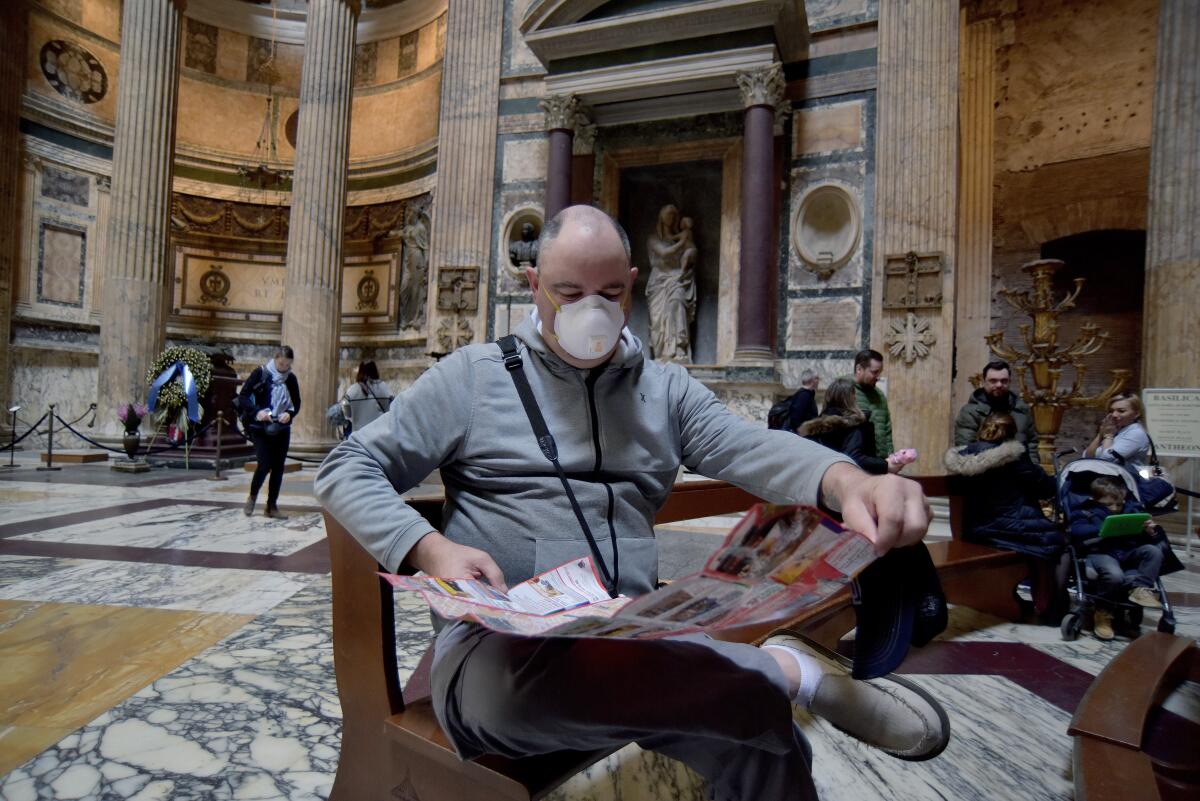
Signs it is already happening were clear on the street running from the Trevi Fountain to the Spanish Steps, which are usually clogged with sightseeing tourists.
Standing alone, an idle taxi driver was counting his losses. “Business is 70% down and the country is grinding to a halt,” he said. “My question is, how will we ever get it started again?”
Farther along, closer to Bernini’s boat-shaped fountain at the foot of the sweeping steps, Sara Bonavita was searching the street for customers from the front door of her leather goods shop. “First the Chinese stopped coming because of the scare over there,” she said. “Now no one is coming here because of the scare over here, and our income is down by half.”
Up on the Spanish Steps, a policeman had finally found use for his whistle when he spotted Thomas Warwick, a visitor from Britain, breaking Rome’s decorum rules by sitting on a step.
Getting up, Warwick explained he was enjoying the empty streets. “We’ve got the virus in Britain, so what’s the difference?” he said. “Last time I was here you couldn’t move on these steps, and now there’s no one.”
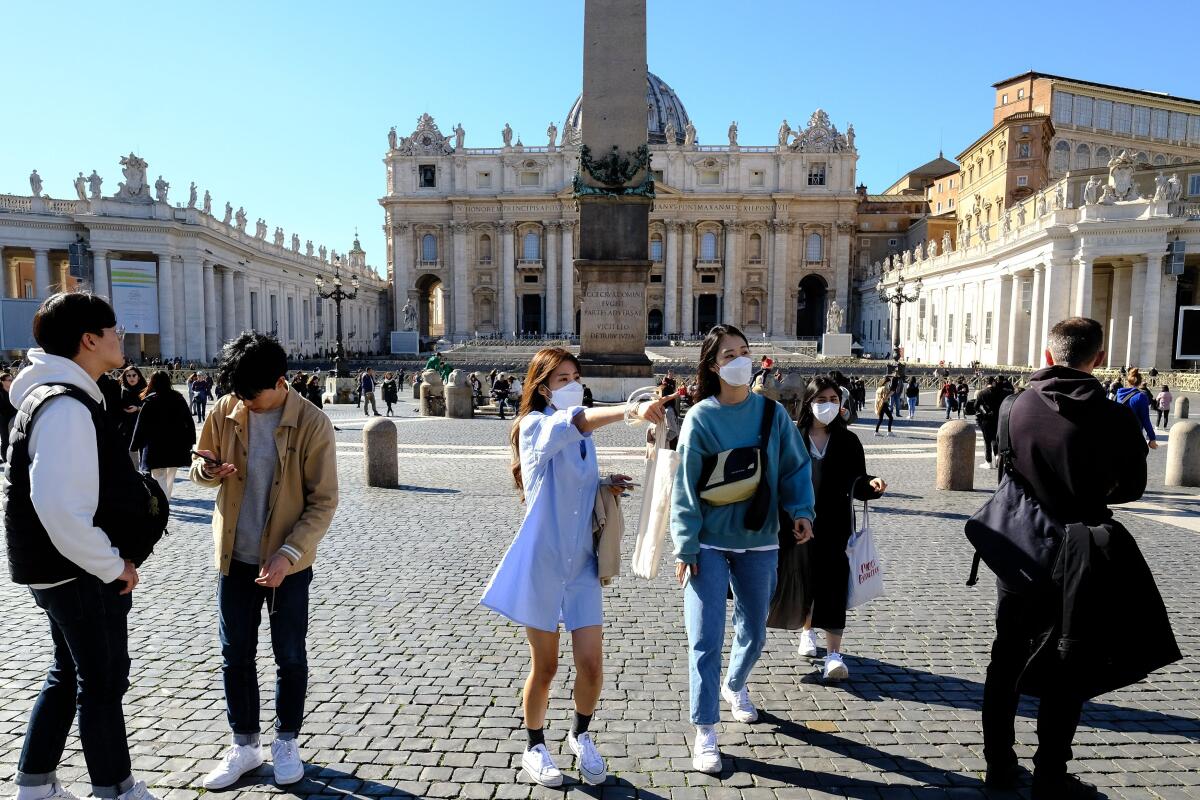
The one crowd to be found in Rome was outside the Scuderie del Quirinale, a former papal stables that now hosts exhibitions and which unveiled Thursday a blockbuster exhibition of works by Raphael to commemorate the 500th anniversary of the Renaissance artist’s death.
After borrowing works from around the world and receiving 76,000 ticket reservations, the exhibition had the massive misfortune to open on the same day the government banned all public gatherings in Italy, with the exception of those at which people could stand one yard away from one another.
“We have 25 staff inside and outside ensuring people keep their distance,” said museum manager Mario De Simoni as he watched ushers advise people lining up by entrance to space themselves out.
“Italians can be quite independent when it comes to queuing, but it’s working,” he said.
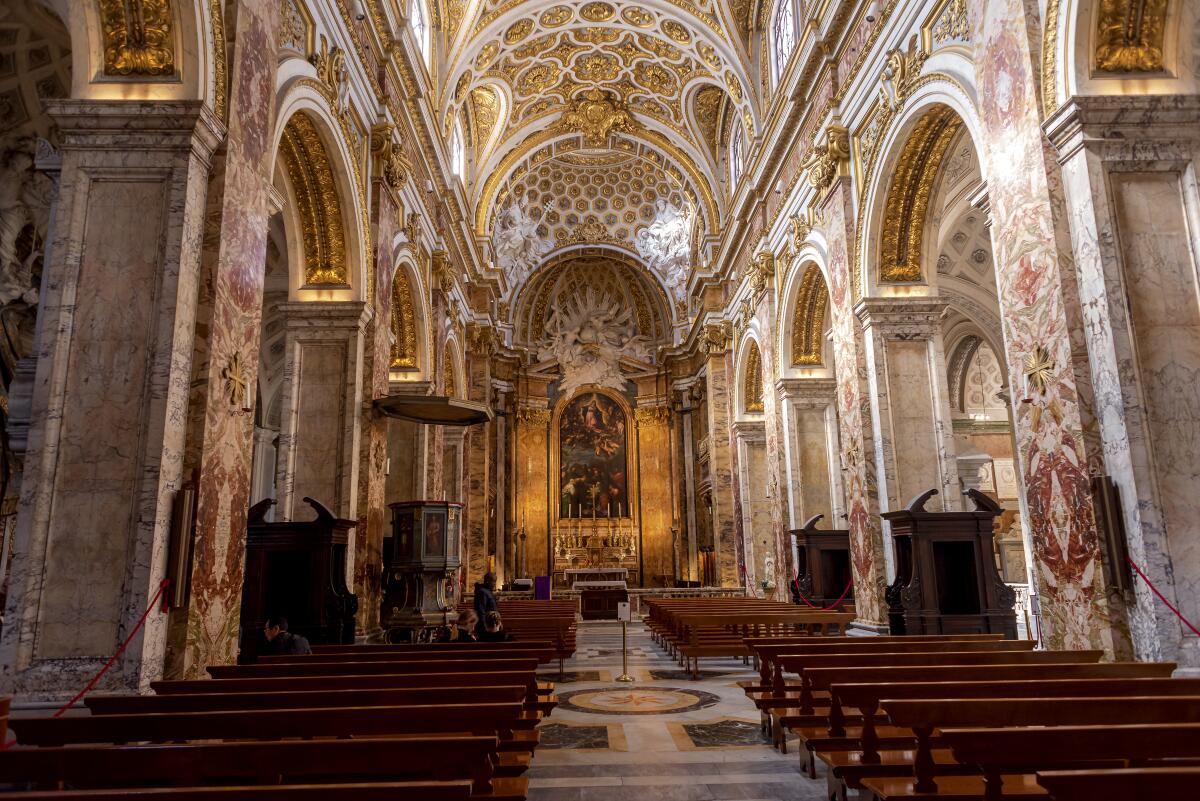
De Simoni said his staff had calculated the floor area of the rooms in the museum and decided they could let in 800 people at a time. “But to be safe we are doing 300,” he said.
There was no question of delaying the show, he added. “Many of the works are on loan or delicate and we cannot wait,” he said.
The line was not huge, but De Simoni was pleased. “Airports, restaurants and trains are empty, but here there is a crowd because culture has a different drawing power,” he said.
Standing in line, Felice Egisto, a 61-year-old doctor, said he was determined to see the show. “I am taking care, but you have to live,” he said. Standing beside him, his wife, Maria Rosaria Bresciani, nodded in agreement.
“The virus will pass. Here today, we can see things which are beautiful and eternal,” she said.
More to Read
Sign up for Essential California
The most important California stories and recommendations in your inbox every morning.
You may occasionally receive promotional content from the Los Angeles Times.
